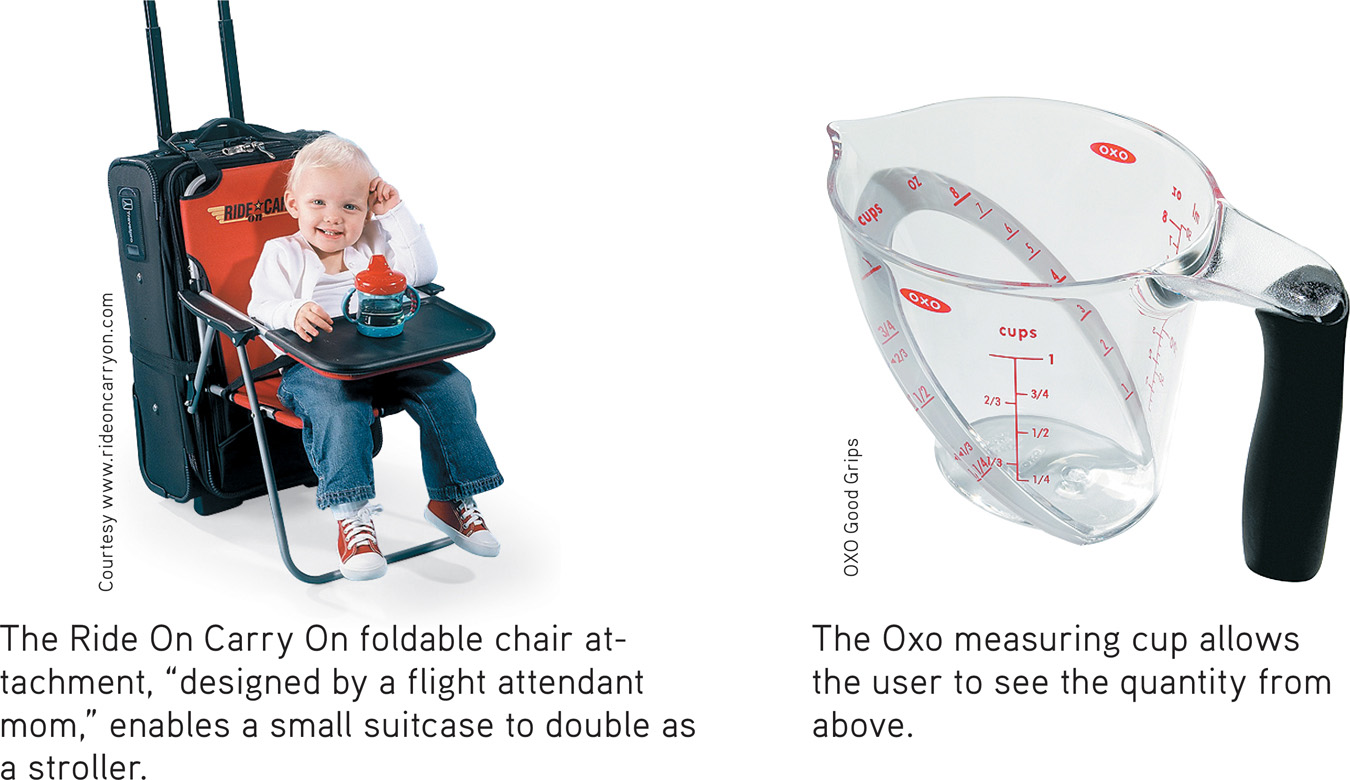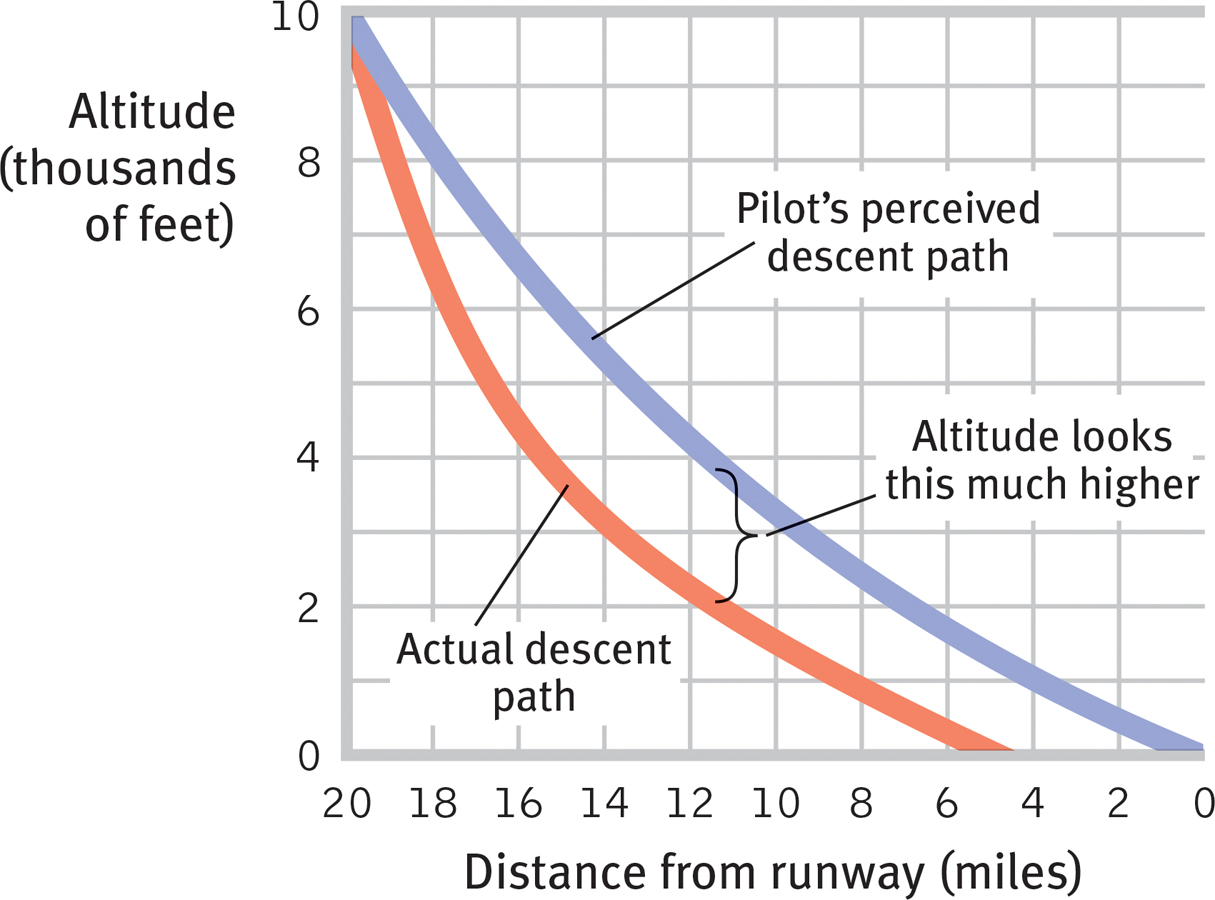A.3 The Human Factor
A-
Designs sometimes neglect the human factor. Psychologist Donald Norman bemoaned the complexity of assembling his new HDTV, related components, and seven remotes into a usable home theater system: “I was VP of Advanced Technology at Apple. I can program dozens of computers in dozens of languages. I understand television, really, I do…. It doesn’t matter: I am overwhelmed.”
How much easier life might be if engineers would routinely test their designs and instructions on real people. Human factors psychologists work with designers and engineers to tailor appliances, machines, and work settings to our natural perceptions and inclinations. Bank ATM machines are internally more complex than remote controls ever were, yet, thanks to human factors engineering, ATMs are easier to operate. Digital recorders have solved the TV recording problem with a simple select-
Norman (2001) hosts a website (www.jnd.org) that illustrates good designs that fit people (FIGURE A.4). Human factors psychologists also help design efficient environments. An ideal kitchen layout, researchers have found, puts needed items close to their usage point and near eye level. It locates work areas to enable doing tasks in order, such as placing the refrigerator, stove, and sink in a triangle. It creates counters that enable hands to work at or slightly below elbow height (Boehm-

 Figure A.4
Figure A.4Designing products that fit people Human factors psychologist Donald Norman offers these and other examples of effectively designed products.
Understanding human factors can help prevent accidents. By studying the human factor in driving accidents, psychologists seek to devise ways to reduce the distractions, fatigue, and inattention that contribute to 1.3 million annual worldwide traffic fatalities (Lee, 2008). Two-

 Figure A.5
Figure A.5The human factor in accidents Lacking distance cues when approaching a runway from over a dark surface, pilots simulating a night landing tended to fly too low. (Data from Kraft, 1978.)
Later Boeing psychologists worked on other human factors problems (Murray, 1998): How should airlines best train and manage mechanics to reduce the maintenance errors that underlie about 50 percent of flight delays and 15 percent of accidents? What illumination and typeface would make on-
Consider, finally, the available assistive listening technologies in various theaters, auditoriums, and places of worship. One technology, commonly available in the United States, requires a headset attached to a pocket-
Designs that enable safe, easy, and effective interactions between people and technology often seem obvious after the fact. Why, then, aren’t they more common? Technology developers sometimes mistakenly assume that others share their expertise—
The point to remember: Everyone benefits when designers and engineers tailor machines and environments to fit human abilities and behaviors, when they user-

REVIEW: Psychology at Work

|
REVIEW | Psychology at Work |
LEARNING OBJECTIVES
RETRIEVAL PRACTICE Take a moment to answer each of these Learning Objective Questions (repeated here from within this section). Then click the 'show answer' button to check your answers. Research suggests that trying to answer these questions on your own will improve your long-
A.1 What is flow, and what are the three subfields of industrial-
Flow is a completely involved, focused state of consciousness with diminished awareness of self and time. It results from fully engaging one’s skills. Industrial-
A.2 How do personnel psychologists help organizations with employee selection, work placement, and performance appraisal?
Personnel psychologists work with organizations to devise selection methods for new employees; recruit and evaluate applicants; design and evaluate training programs; identify people’s strengths; analyze job content; and appraise individual and organizational performance. Unstructured, subjective interviews foster the interviewer illusion; structured interviews pinpoint job-
A.3 What is the role of organizational psychologists?
Organizational psychologists examine influences on worker satisfaction and productivity and facilitate organizational change. Employee satisfaction and engagement tend to correlate with organizational success.
A.4 What are some effective leadership techniques?
Effective leaders harness job-
A.5 How do human factors psychologists work to create user-
Human factors psychologists contribute to human safety and improved design by encouraging developers and designers to consider human perceptual abilities, to avoid the curse of knowledge, and to test users to reveal perception-
TERMS AND CONCEPTS TO REMEMBER
RETRIEVAL PRACTICE Match each of the terms on the left with its definition on the right. Click on the term first and then click on the matching definition. As you match them correctly they will move to the bottom of the activity.
Question
flow industrial- personnel psychology organizational psychology human factors psychology structured interviews task leadership social leadership | interview process that asks the same job- group- applies psychology’s methods and principles to selecting and evaluating workers. Personnel psychologists match people with jobs, by identifying and placing well- goal- an I/O psychology subfield that examines organizational influences on worker satisfaction and productivity and facilitates organizational change. a completely involved, focused state of consciousness, with diminished awareness of self and time, resulting from optimal engagement of one’s skills. the application of psychological concepts and methods to optimizing human behavior in workplaces. an I/O psychology subfield that explores how people and machines interact and how machines and physical environments can be made safe and easy to use. |
Use  to create your personalized study plan, which will direct you to the resources that will help you most in
to create your personalized study plan, which will direct you to the resources that will help you most in  .
.
TEST
YOUR-
SELF PSYCHOLOGY AT WORK
Test yourself repeatedly throughout your studies. This will not only help you figure out what you know and don’t know; the testing itself will help you learn and remember the information more effectively thanks to the testing effect.
Question
A.1 People who view their work as a calling often experience ________, a focused state of consciousness, with diminished awareness of themselves and of time.
| A. |
| B. |
| C. |
| D. |
Question
A.2 psychologists study the recruitment, selection, placement, training, appraisal, and development of employees; psychologists focus on how people and machines interact, and on optimizing devices and work environments.
 Personnel Psychology
Personnel Psychology
Question
A.3 A personnel psychologist scripted a set of questions to ask all applicants for a job opening. She then trained the firm’s interviewers to ask only these questions, to take notes, and to rate applicants’ responses. This technique is known as a(n)
| A. |
| B. |
| C. |
| D. |
Question
A.4 In your job, you rate your own performance, your manager’s, and your peers’. Your manager, your peers, and your customers also rate your performance. Your organization is using a form of performance appraisal called
| A. |
| B. |
| C. |
| D. |
 Organizational Psychology
Organizational Psychology
Question
A.5 What type of goals will best help you stay focused and motivated to do your best work in this class?
Focusing on specific, short-
Question
A.6 Research indicates that women are more likely than men to have a leadership style.
Question
A.7 Effective managers often exhibit
| A. |
| B. |
| C. |
| D. |
 The Human Factor
The Human Factor
Question
A.8 To reduce users’ frustration and to avoid accidents, human factors psychologists help organizations avoid the curse of knowledge, which is the tendency for
| A. |
| B. |
| C. |
| D. |